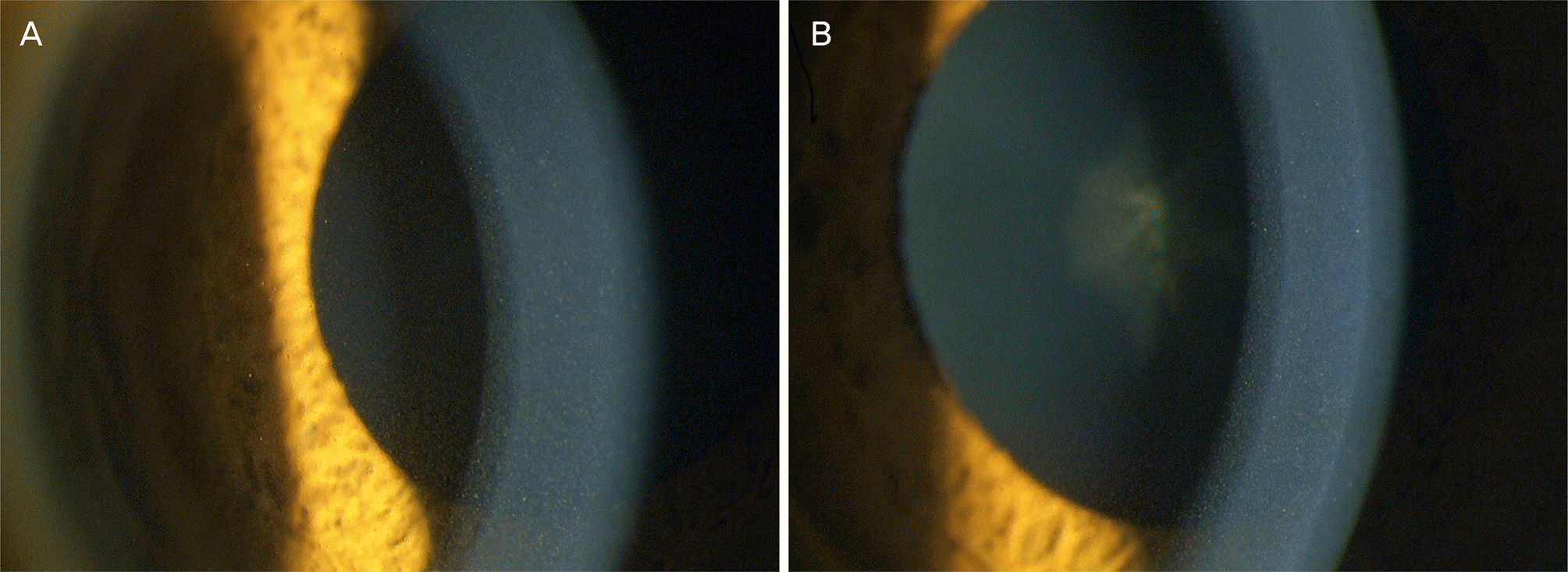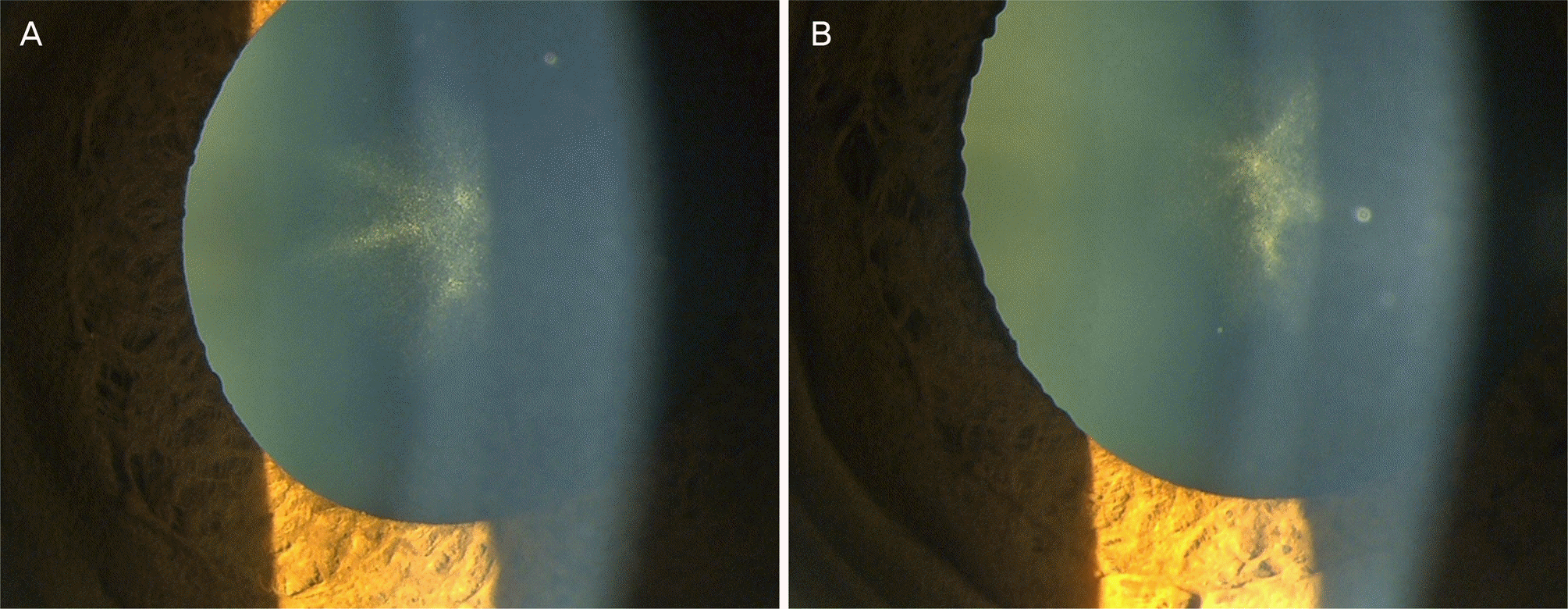Abstract
Case summary
A 56-year-old male visited our hospital with a progressive decline in vision that affected both eyes. He had a history of schizophrenia. He was being treated with 200 mg clozapine and 1 mg lorazepam daily, and had been treated with clozapine for 5 years. At the first visit, his best-corrected-visual acuity was 20/32 in both eyes. Slit lamp examination of the corneas showed bright, fine, grayish-brown deposits on the endothelium, and on dilation, bilateral central stellate opacity of the anterior portion of the lens capsule was revealed.
References
1. Shahzad S, Suleman MI, Shahab H, et al. Cataract occurrence with antipsychotic drugs. Psychosomatics. 2002; 43:354–9.

2. Kim HS, Choi HJ, Yun YS. Two cases of chlorpromazine-induced corneal and lenticular opacity. J Korean Ophthalmol Soc. 2002; 43:2349–53.
3. Buffaloe WJ, Johnson AW, Sandifer MG Jr. Total dosage of abdominal and ocular opacities. Am J Psychiatry. 1967; 124:250–1.
4. Greiner AC, Berry K. Skin pigmentation and corneal and lens opacities with prolonged chlorpromazine therapy. Can Med Assoc J. 1964; 90:663–5.
5. Lal S, Bloom D, Silver B, et al. Replacement of chlorpromazine with other neuroleptics: effect on abnormal skin pigmentation and ocular changes. J Psychiatry Neurosci. 1993; 18:173–7.
6. Souza VB, Moura Filho FJ, Souza FG, et al. Cataract occurrence in patients treated with antipsychotic drugs. Braz J Psychiatry. 2008; 30:222–6.

7. Choo BJ, Kang YS, Kim TJ, Park JH. A case of cataract after long-term use of clonazepam in a young patient. J Korean Ophthalmol Soc. 2011; 52:1541–4.

8. Borovik AM, Bosch MM, Watson SL. Ocular pigmentation abdominal with clozapine. Med J Aust. 2009; 190:210–1.
9. Miyamoto S, Duncan GE, Marx CE, Lieberman JA. Treatments for schizophrenia: a critical review of pharmacology and mechanisms of action of antipsychotic drugs. Mol Psychiatry. 2005; 10:79–104.

10. Malhotra AK. Pharmacogenomics and schizophrenia: clinical implications. Pharmacogenomics J. 2001; 1:109–14.

11. Lal S, Lal S. Chlorpromazine-induced cutaneous pigmentation abdominal of replacement with clozapine. J Psychiatry Neurosci. 2000; 25:281.
12. Deluise VP, Flynn JT. Asymmetric anterior segment changes abdominal by chlorpromazine. Ann Ophthalmol. 1981; 13:953–5.
13. Razeghinejad MR. Ocular adverse effects of common psychotropic agents: a review. CNS drugs. 2010; 24:977–8.
14. Cohen J, Iuvone PM, Neff NH. Neuroleptic drugs activate tyrosine hydroxylase of retinal amacrine cells. J Pharmacol Exp Ther. 1981; 218:390–4.




 PDF
PDF ePub
ePub Citation
Citation Print
Print




 XML Download
XML Download